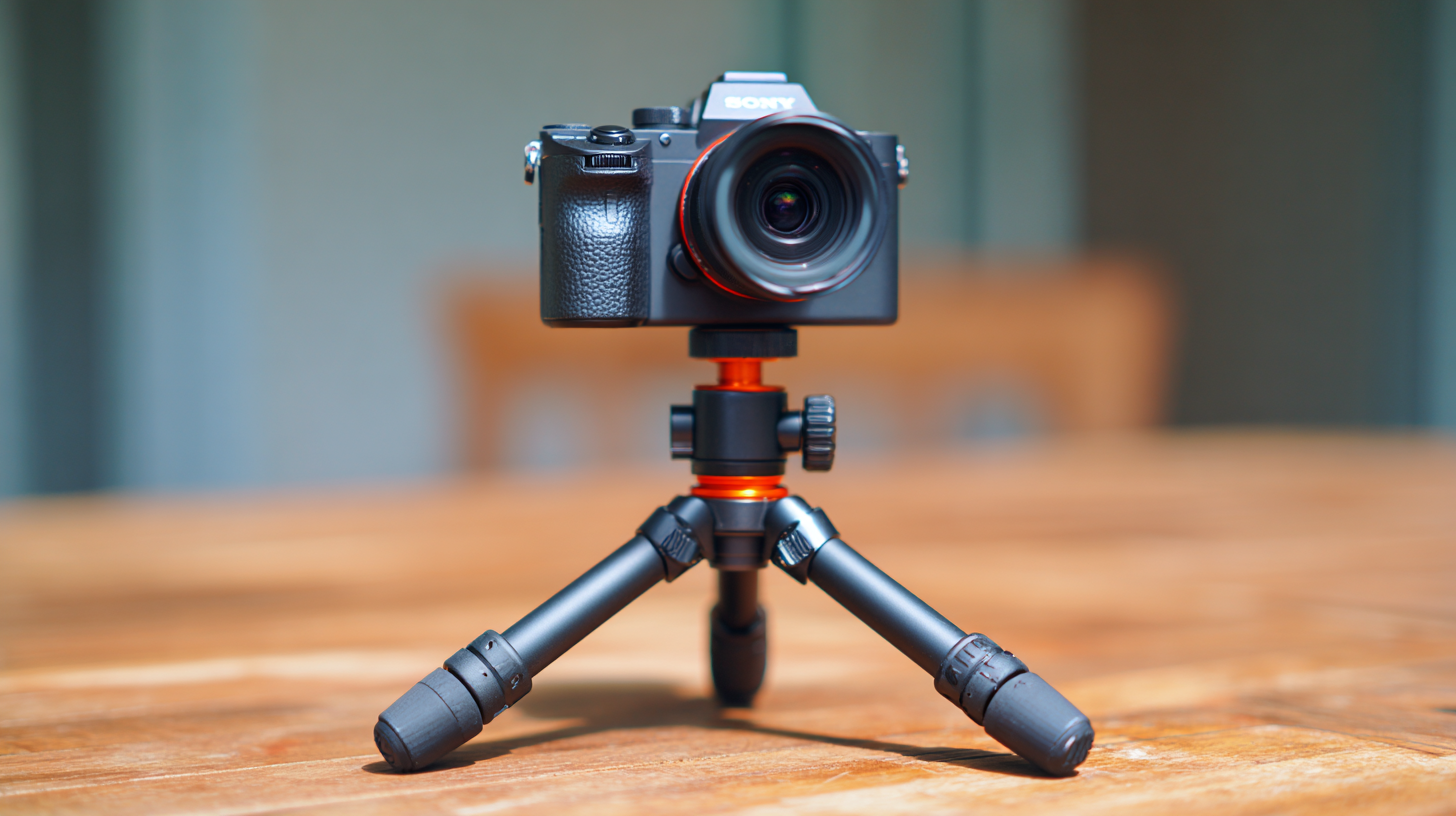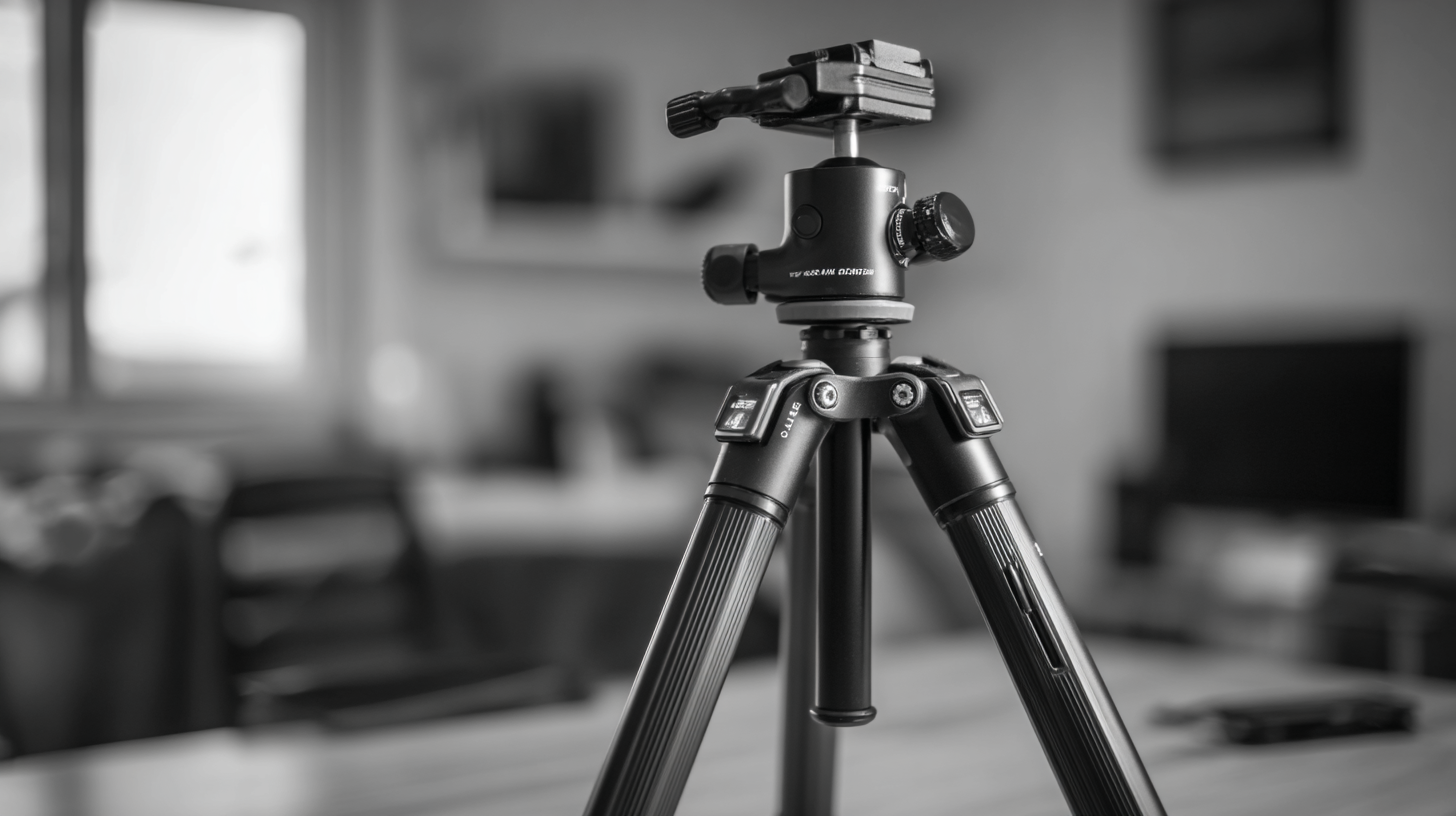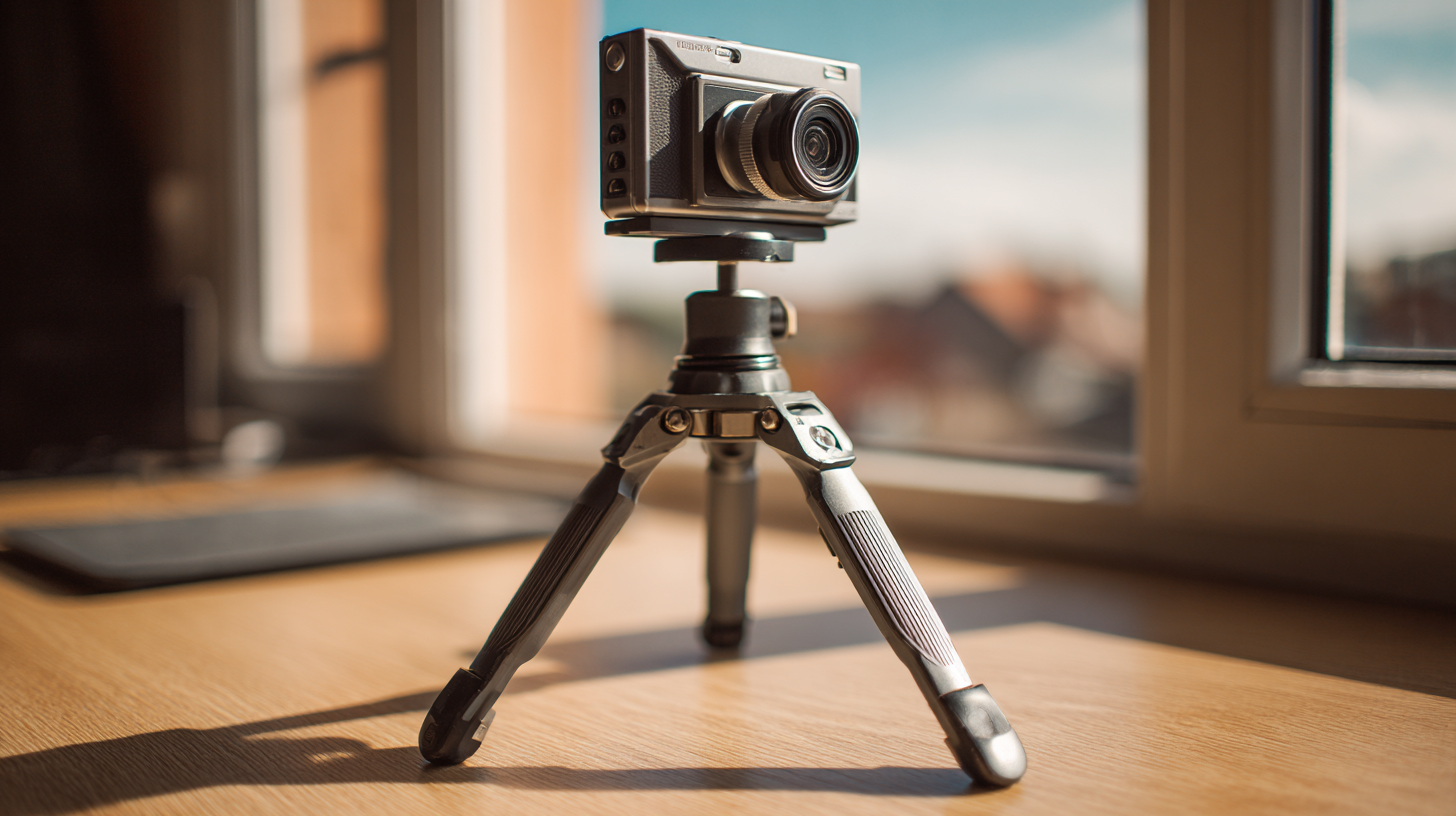In the evolving landscape of photography, the significance of choosing the right gear cannot be overstated, with particular attention on accessories like the tabletop tripod. As the global tripod market is projected to reach approximately $2.5 billion by 2025, it is vital for both amateur and professional photographers to understand the nuances of selecting the best tabletop tripod tailored to their specific needs. Recent reports indicate that the growing popularity of mobile photography and vlogging has spurred a 30% increase in demand for compact, versatile tripods. This emphasizes the necessity for a comprehensive checklist that evaluates stability, weight, adjustability, and ease of use to ensure that your photography equipment enhances your creative endeavors. As we delve into the essential considerations for selecting a tabletop tripod, we aim to illuminate how the right choice can significantly elevate your photography experience in this rapidly changing market.

When selecting a tabletop tripod, several key features should be at the forefront of your considerations. First and foremost, stability is paramount. Look for a tripod that has a solid base and rubberized feet to prevent slipping on various surfaces. This is especially important for photographers who often shoot in outdoor settings where uneven terrain may be a factor. Additionally, consider the weight capacity. Ensure the tabletop tripod can support your camera gear without compromising stability, allowing for a secure setup for both lightweight mirrorless cameras and heavier DSLRs.

Another essential feature to keep in mind is adjustability. A quality tabletop tripod should offer flexible height options and the ability to tilt and pan. Look for models with multiple leg positions or extendable sections, as this will enhance your shooting versatility. Quick-release plates can also streamline your setup process, enabling you to switch between shots with ease. Finally, durability should not be overlooked; opt for materials like aluminum or carbon fiber that can withstand regular use while remaining lightweight for portability. These attributes combine to create a dependable tool that can elevate your photography experience.
When selecting a tabletop tripod for your photography needs, understanding the significance of stability and weight capacity is paramount. Stability ensures that your camera remains steady, eliminating unwanted blur and ensuring crisp images, especially during long exposures or in windy conditions. A tripod with a wide base and sturdy legs can provide the necessary support, while features such as rubberized feet and adjustable leg angles further enhance grip on various surfaces.
Weight capacity is another critical factor that photographers must consider. It determines not only how much gear you can safely attach but also influences the overall performance of the tripod. A tripod rated for a higher weight capacity can better absorb vibrations and support heavier cameras and lenses without sacrificing stability. Choosing a tabletop tripod that meets both your equipment weight and stability requirements will help you capture clear and professional-looking shots, no matter the setting.

When selecting a tabletop tripod, understanding the material types is crucial for optimizing your photography experience. The two most popular materials are aluminum and carbon fiber, each offering distinct advantages. According to a report by the Imaging Resource, aluminum tripods are generally more affordable and provide excellent stability for basic photography needs. They typically weigh between 3 to 5 pounds, making them relatively easy to transport for both amateur and professional photographers. However, their weight can be a detriment during prolonged shoots or when traveling.
On the other hand, carbon fiber tripods have gained significant traction among serious photographers due to their lightweight design and superior vibration-dampening properties. A study by the American Society of Photographers highlighted that carbon fiber tripods can reduce vibration by up to 50% compared to aluminum models, significantly enhancing image clarity during long exposures. Despite being pricier, ranging from 20% to 100% more than aluminum counterparts, the investment is often justified by their durability and performance in various environments. As photographers assess their equipment needs, weighing the long-term benefits of carbon fiber against the initial cost of aluminum is essential for their overall satisfaction and success.
| Criteria | Aluminum Tripods | Carbon Fiber Tripods |
|---|---|---|
| Weight | Heavier, typically 1.5-3 lbs | Lighter, typically 1-2 lbs |
| Durability | Good, but can dent | Excellent, resistant to impacts |
| Price Range | $50 - $300 | $150 - $600 |
| Vibration Absorption | Moderate | Superior |
| Weather Resistance | Less resistant, needs care | More resistant, can handle moisture |
| Color Options | Various colors available | Usually black or dark finishes |
When selecting the ideal tabletop tripod for your photography needs, understanding the height adjustment range is crucial. A report from the American Society of Media Photographers reveals that over 70% of photographers find versatility in their tripods to be a key factor in their workflow efficiency. A tripod with an adequate height adjustment range allows photographers to shoot at various angles and perspectives, which enhances creative options. By adjusting the height, photographers can easily transition from capturing detailed close-ups to expansive landscapes without changing equipment.
Moreover, the impact of height adjustment range on stability cannot be overlooked. According to a study by the Photographic Research Organization, tripods that offer a wider height range tend to stabilize the camera better, reducing shake and resulting in sharper images. This is particularly important in low-light conditions or when using long exposure techniques. A well-adjusted tripod also promotes better posture and reduces fatigue during extended shooting sessions, making it an essential accessory for both amateur and professional photographers alike.
When selecting a tabletop tripod, portability is a key factor for travel photographers who prioritize convenience without sacrificing stability. According to a survey by the American Photographic Association, nearly 70% of professional photographers cite weight and size as critical aspects when choosing their gear for on-the-road shoots. A portable tripod should ideally weigh less than 3 lbs and fold down to a compact size that fits easily into a backpack or camera bag. Lightweight materials such as carbon fiber or aluminum can greatly enhance portability, allowing photographers to carry their equipment easily during long hikes or urban explorations.
Moreover, functionality must not be compromised for the sake of portability. Research indicates that advanced tripod features, like adjustable legs and quick-release plates, significantly contribute to versatility in different shooting environments. A recent study revealed that 55% of photographers prefer tripods that offer multi-angle shooting capabilities, which can be particularly beneficial for capturing dynamic scenes while traveling. By focusing on these criteria, photographers can find a tabletop tripod that strikes the perfect balance between weight and functionality, ensuring they are well-equipped to capture stunning images on their travels.
